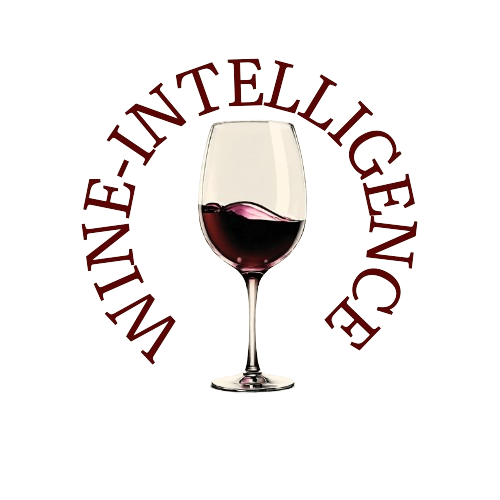The global wine industry, valued at a staggering USD 353 billion—a figure comparable to the GDP of countries like Hong Kong or Finland—finds itself at a critical juncture.
While not facing a ban as drastic as the U.S. Prohibition of the 1920s, there are growing concerns that alcohol consumption is increasingly being perceived in a negative light, especially among younger generations and certain health authorities. This shift in public sentiment is raising alarms across the sector, threatening not only its financial stability but also its cultural significance.
The Rise of Anti-Alcohol Movements: "Dry January" and "Sober October"
Movements such as “Dry January” and “Sober October”, which encourage people to abstain from alcohol for a month, have gained considerable momentum in recent years. Initially grassroots initiatives, they are now widely popular in countries like the UK, the U.S., and beyond. These movements are having a direct impact on the perception of wine as a safe and pleasurable drink that can be consumed in moderation. What was once a simple abstention challenge has evolved into a cultural shift, with increasing numbers of people choosing alcohol-free lifestyles as part of a broader focus on health and wellness.
This trend is more than just a social media phenomenon. It has started to influence public policy, most notably in the United States, where the Dietary Guidelines for 2025-2030 are currently under review. Several groups in the alcohol sector, such as the Wine Institute and the Brewers Association, have expressed concern about the potential reduction in the recommendation for moderate consumption. Currently, the guidelines suggest one drink per day for women and two for men. However, the new proposal could lower that to just two drinks per week, a change that could significantly impact consumer behavior and the industry at large.
Alcohol Under Scrutiny: The Role of the WHO and Public Health Advocacy
The push to reduce alcohol consumption is not without its proponents. Since 2015, the World Health Organization (WHO) has ramped up its efforts to highlight the risks associated with alcohol, classifying it as a Group 1 carcinogen, alongside substances like tobacco and asbestos. This classification, combined with studies claiming that no level of alcohol consumption is entirely risk-free, has spurred a major cultural shift. Younger generations, in particular, are adopting this view, leading to a sharp rise in the perception of alcohol as a health risk—from 22% in 2005 to 39% in 2023.
The wine industry’s fears are not unwarranted. Karen MacNeil, a renowned wine journalist and author of The Wine Bible, experienced firsthand how opinions around alcohol are shifting. In her video titled “Why I Hate Dry January”, MacNeil faced a wave of criticism on social media, where users took a moralistic stance against her views on wine. For the first time, MacNeil felt that she was “on the wrong side of a moral equation for loving wine,” reflecting the increasing tension between wine as a symbol of culture and its rebranding as a potential health threat.
Industry Response: Defending Wine’s Legacy and Moderation
In response to these challenges, key players in the wine industry are taking action. In June 2024, several beverage associations, including the Wine & Spirits Wholesalers of America and the Distilled Spirits Council, sent a letter to U.S. Health Secretary Xavier Becerra and Agriculture Secretary Thomas Vilsack. Their letter expressed concerns about potential bias in the formation of the committees responsible for reviewing the dietary guidelines, questioning the inclusion of scientists with anti-alcohol stances.
Beyond lobbying efforts, the industry is also fighting back with science. Laura Catena, a prominent Argentine winemaker and physician, has taken a proactive approach by launching the In Defense of Wine platform. This initiative aims to promote studies that highlight the benefits of moderate wine consumption, particularly its positive effects on cardiovascular health and its ability to reduce the risk of stroke and diabetes in people over 40. While Catena acknowledges the dangers of excessive alcohol consumption, she argues that many studies demonizing alcohol focus on marginally increased risks, often blowing them out of proportion.
Changing Drinking Habits of Younger Generations
The wine industry is also facing the challenge of shifting drinking habits among younger consumers. A survey conducted by Wine Opinions and Colangelo & Partners revealed that 25% of respondents aged 21 to 39 view even one drink a day as problematic. If the new dietary guidelines reduce the recommendation to two drinks per week, it is expected that two-thirds of younger drinkers will follow suit. This shift could deal a devastating blow to the wine industry, which, in the U.S. alone, supports 1.84 million jobs and generates USD 276 billion in economic impact.
A Cultural Counter-Movement: "Come Over October"
In an effort to resist the negative perceptions surrounding alcohol, Karen MacNeil and other wine professionals have launched the “Come Over October” campaign. This initiative promotes the idea of wine as a symbol of conviviality, friendship, and pleasure, encouraging people to gather and share a glass of wine. Major wineries and companies, including Jackson Family Wines, J. Lohr, and Lyft, have shown their support for the campaign, emphasizing that wine is more than just a drink—it’s a cultural experience.
Source: Vinetur

